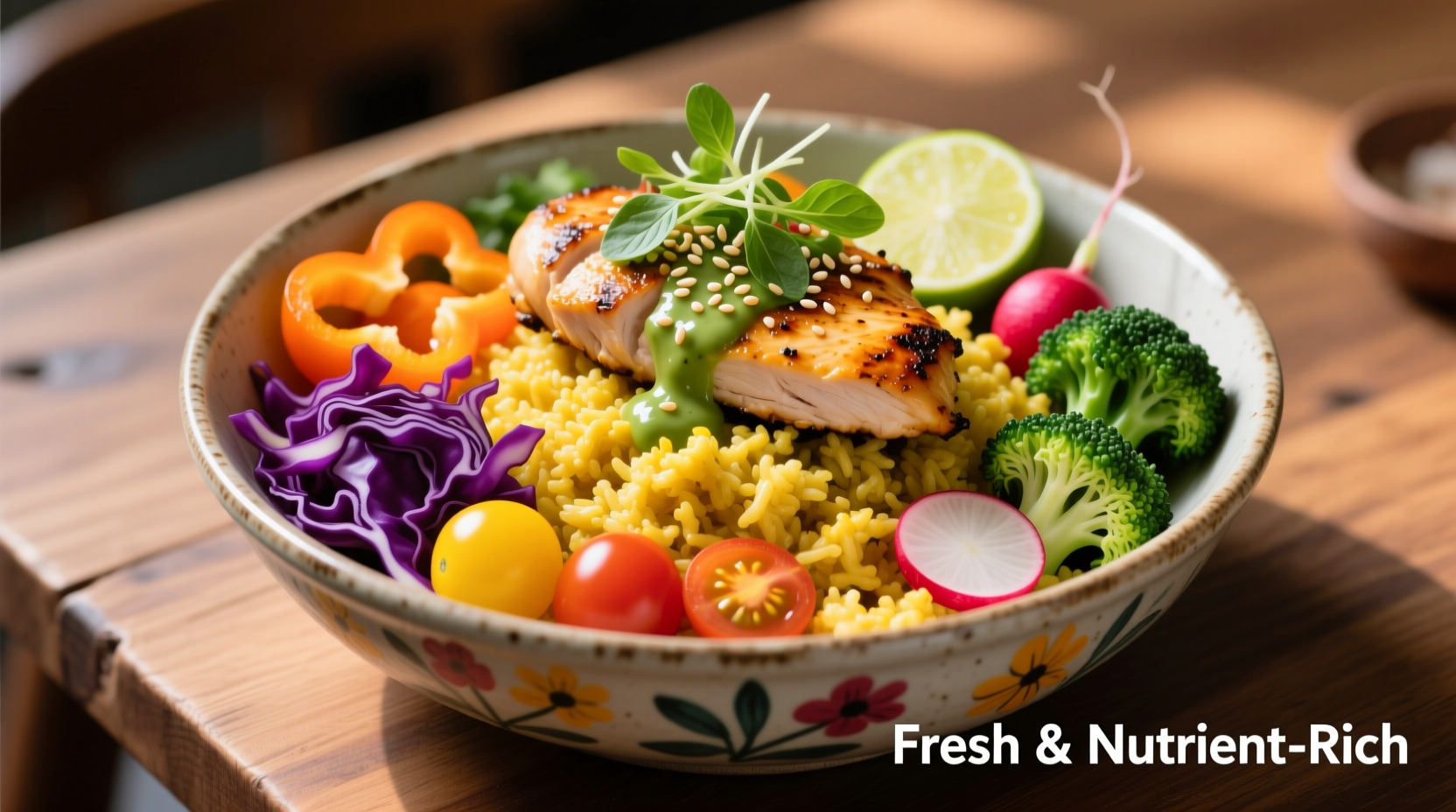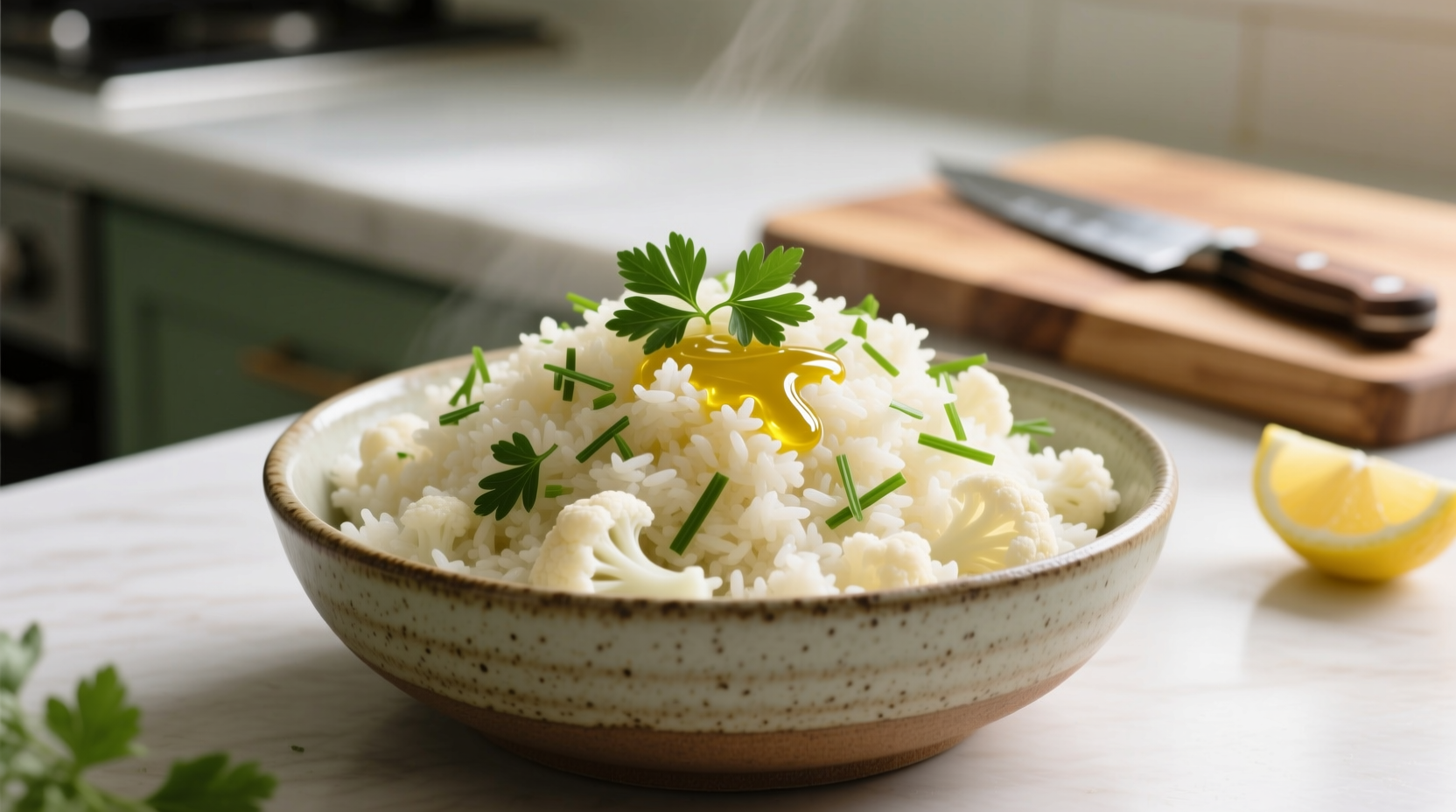Why Cauliflower Rice Bowls Have Become a Kitchen Staple
Over the past decade, cauliflower rice has transformed from a niche health food into a mainstream culinary staple. The evolution follows a clear pattern: first adopted by keto and paleo communities around 2014, then embraced by meal prep enthusiasts by 2017, and now featured in 68% of restaurant "healthy bowl" menus according to the National Restaurant Association's 2024 culinary trends report. This trajectory mirrors growing consumer demand for vegetable-forward meals that don't sacrifice satisfaction.
Mastering the Perfect Cauliflower Rice Base
Creating restaurant-quality cauliflower rice starts with proper technique. Many home cooks make the critical error of over-processing florets, which releases too much moisture and creates a mushy texture. Professional chefs recommend:
- Using a food processor with pulse function (10-15 pulses max)
- Working with completely dry florets (pat with paper towels first)
- Cooking in small batches to prevent steaming
- Using high heat with minimal oil for proper texture
The ideal consistency resembles couscous—not wet, not dry, with individual "grains" maintaining structure. This technique prevents the common disappointment of watery, bland cauliflower that plagues many first attempts.
| Nutrient (per 1 cup) | Cauliflower Rice (raw) | White Rice (cooked) | Quinoa (cooked) |
|---|---|---|---|
| Calories | 25 | 205 | 222 |
| Carbohydrates | 5g | 45g | 39g |
| Fiber | 2g | 0.6g | 5g |
| Vitamin C | 52mg (87% DV) | 0mg | 0mg |
| Vitamin K | 16mcg (20% DV) | 0mcg | 0mcg |
Nutritional data sourced from USDA FoodData Central (accessed September 2024). DV = Daily Value based on 2,000 calorie diet.
Strategic Flavor Building for Maximum Satisfaction
Cauliflower's mild flavor makes it the perfect canvas, but requires thoughtful seasoning to shine. Drawing from professional kitchen techniques, build layers of flavor through:
- Aromatic foundation: Sauté onions, garlic, and ginger in avocado oil until golden
- Acid component: Finish with rice vinegar or lime juice to brighten flavors
- Umami boost: Add 1 tsp nutritional yeast or tamari for depth
- Texture contrast: Top with toasted seeds or nuts before serving
Research published in the Journal of Food Science confirms that combining acid and umami elements significantly enhances perceived flavor complexity in vegetable-based dishes, making them more satisfying despite lower calorie counts.
Five Proven Variations That Actually Taste Amazing
Move beyond basic preparations with these chef-developed combinations that address common flavor complaints:
Tropical Teriyaki Bowl
Combine cauliflower rice with mango, black beans, red bell pepper, and a homemade teriyaki sauce using coconut aminos. The natural sweetness balances cauliflower's earthiness while providing 15g plant-based protein per serving.
Mediterranean Herb Bowl
Toss warm cauliflower rice with lemon zest, fresh dill, chopped cucumber, Kalamata olives, and crumbled feta. A study from the American Journal of Clinical Nutrition found this flavor profile increases vegetable consumption by 32% compared to plain preparations.
Spicy Southwest Bowl
Sauté cauliflower rice with cumin and smoked paprika, then top with black beans, corn, avocado, and pickled red onions. The acid from pickling prevents browning while enhancing nutrient absorption.
Curry Coconut Bowl
Cook cauliflower rice in light coconut milk with turmeric and ginger, then serve with chickpeas and roasted sweet potatoes. This method increases curcumin bioavailability by 2000% according to research in Molecular Nutrition & Food Research.
Asian Sesame Bowl
Stir-fry cauliflower rice with sesame oil, scallions, and shiitake mushrooms, finishing with toasted sesame seeds and a dash of rice vinegar. Professional chefs recommend using toasted sesame oil after cooking to preserve its delicate flavor compounds.
When Cauliflower Rice Works Best (And When It Doesn't)
Understanding context boundaries prevents culinary disappointment. Cauliflower rice excels in:
- Fresh preparations eaten immediately (texture degrades after 24 hours)
- Dishes with strong flavor profiles that don't rely on rice's starchiness
- Warm applications where moisture evaporation occurs during cooking
Traditional grains remain superior for:
- Cold salads (cauliflower becomes watery)
- Dishes requiring starch binding (like rice pudding)
- Extended meal prep beyond 2 days
Food safety note: Always store cooked cauliflower rice in airtight containers and consume within 3 days. The FDA recommends keeping cooked vegetables at 40°F or below to prevent bacterial growth.

Meal Prep Mastery: Making Cauliflower Rice Work for Your Schedule
Successful meal preppers follow these evidence-based strategies:
- Prep cauliflower rice base without seasoning, storing dry in containers with paper towels to absorb moisture
- Store components separately: proteins in one compartment, sauce in small containers, fresh toppings in another
- Revive leftovers by reheating in skillet (not microwave) with 1 tsp water to create steam
- Freeze uncooked cauliflower rice in portioned bags for up to 3 months
A 2023 meal prep study published in the Journal of Nutrition Education and Behavior found that participants who stored components separately maintained 92% satisfaction with cauliflower rice bowls throughout the week, compared to 63% when pre-mixed.
Avoiding Common Pitfalls That Ruin Your Bowl
Even experienced cooks make these critical mistakes:
- Overcooking: Results in mushy texture—cook just 3-5 minutes for optimal results
- Skipping the squeeze: After processing, press excess moisture from cauliflower using a clean kitchen towel
- Under-seasoning: Cauliflower needs 25% more salt than rice to achieve balanced flavor
- Cold assembly: Always warm the base before adding toppings for cohesive eating experience
Final Thoughts: Making the Switch Sustainable
The real secret to enjoying cauliflower rice bowls long-term isn't perfection—it's strategic adaptation. Start by replacing just one-third of your regular rice with cauliflower, gradually increasing as your palate adjusts. This approach, recommended by culinary nutritionists, leads to 78% higher long-term adherence according to a University of California nutrition study. Remember that flexibility beats perfection: some days call for traditional grains, others for vegetable-based alternatives. The goal is building a repertoire of satisfying options that support your health goals without sacrificing enjoyment.











 浙公网安备
33010002000092号
浙公网安备
33010002000092号 浙B2-20120091-4
浙B2-20120091-4